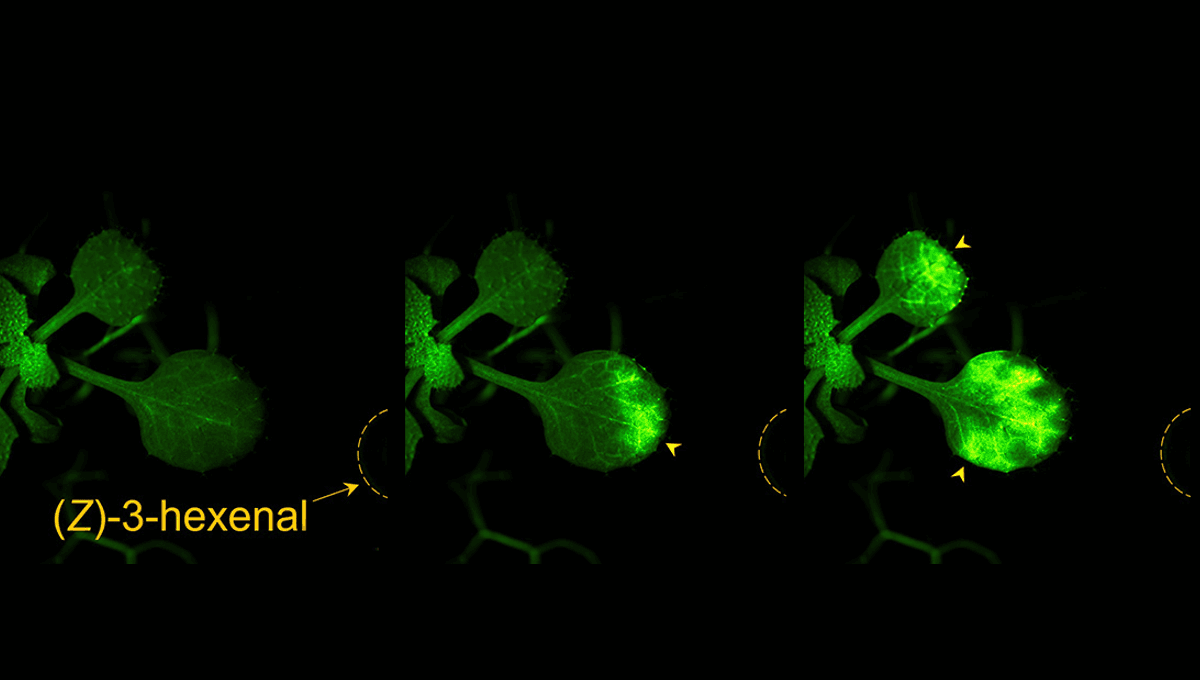
Money talks, people talk – and now, according to new research, the plants are talking too. While we knew that plants had been chatting away to each other since 1983, one team has taken a closer look at the chemicals involved in this communication.
When a plant is damaged by an animal or a careless hiker, volatile organic compounds (VOCs) are released. Plants nearby to the one under attack receive these VOCs which act as a trigger for the unharmed plants to prime their defenses. More than 30 different plant species are known to communicate in this way, however, what is happening within the plants on a molecular level remains poorly understood.
To better study what was happening, the team set up an imaging system using plants expressing a fluorescent Ca2+ biosensor that could capture the moments the VOCs were taken up by other plants.
“We constructed equipment to pump VOCs emitted from plants fed by caterpillars onto undamaged neighboring plants and combined it with a wild-field, real-time fluorescent imaging system,” said Professor Masatsugu Toyota, the team leader, in a statement.
The team showed that changes in concentrations of Ca2+ triggered the defenses.
“This innovative setup visualized bursts of fluorescence spreading in a mustard plant Arabidopsis thaliana after exposure to VOCs emitted from the insect-damaged plant,” continued Toyota. “The plants create fluorescent protein sensors for intracellular Ca2+ and therefore, changes in intracellular Ca2+ concentration can be monitored by observing changes in fluorescence.”
The team found that both VOCs released from leaves feasted upon by caterpillars and VOCs released by leaves smashed artificially by the team triggered Ca2+ changes in the nearby undamaged plants.
The researchers decided to look more closely at the types of VOCs that were causing the Ca2+ signal changes. They found two VOCs, (Z)-3-hexenal (Z-3-HAL) and (E)-2-hexenal (E-2-HAL), caused changes in Ca2+ signals. These two chemicals smell like grasses and are known as green leaf volatiles (GLV).
“Plants do not possess a ‘nose’, but stomata serve as a plant gateway mediating rapid GLV entry into interspaces in leaf tissues,” says Toyota.
When looked at in a plant expressing the fluorescent biosensor, Z-3-HAL triggered Ca2+ signals in the guard cells first, in about a minute, and then in mesophyll cells. However epidermal cells were slower to generate the Ca2+ signals.
“We have finally unveiled the intricate story of when, where, and how plants respond to airborne ‘warning messages’ from their threatened neighbors,” he says. “This ethereal communication network, hidden from our view, plays a pivotal role in safeguarding neighboring plants from imminent threats in a timely manner,” finished Toyota.
The paper is published in the journal Nature Communications.
Source Link: Watch Plants Chat About Their Neighbours' Peril Using Hidden Airborne Communication Pathways